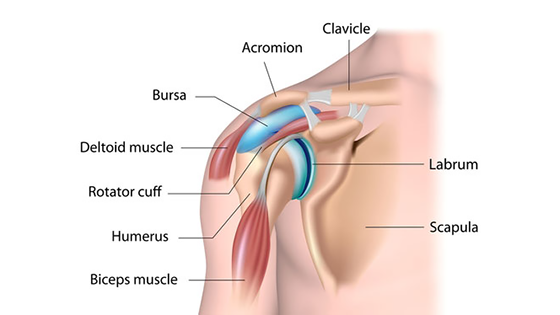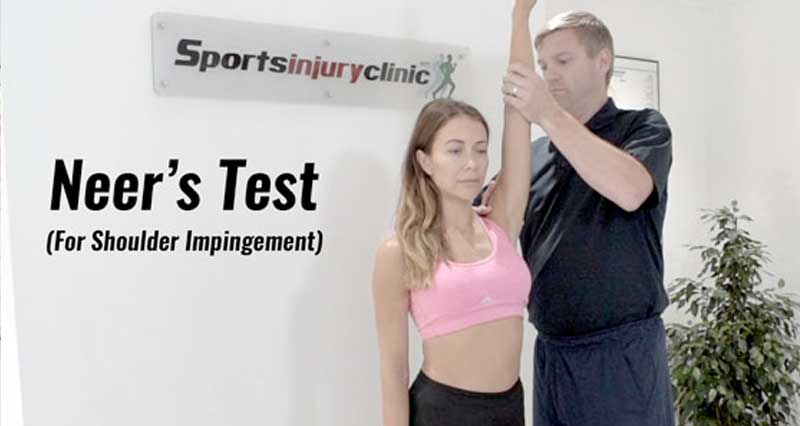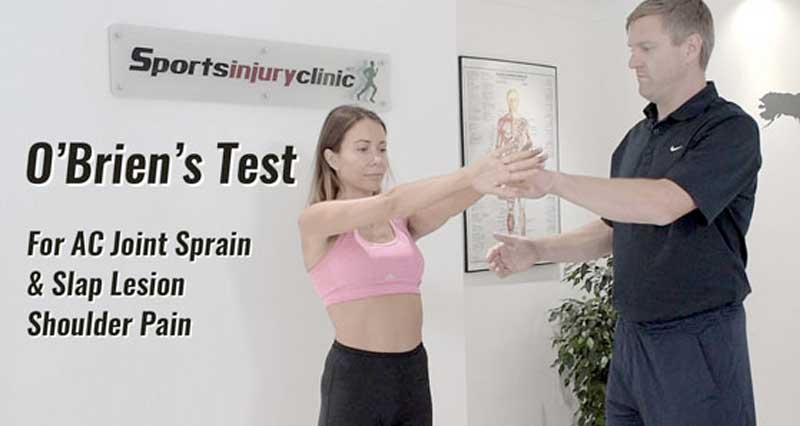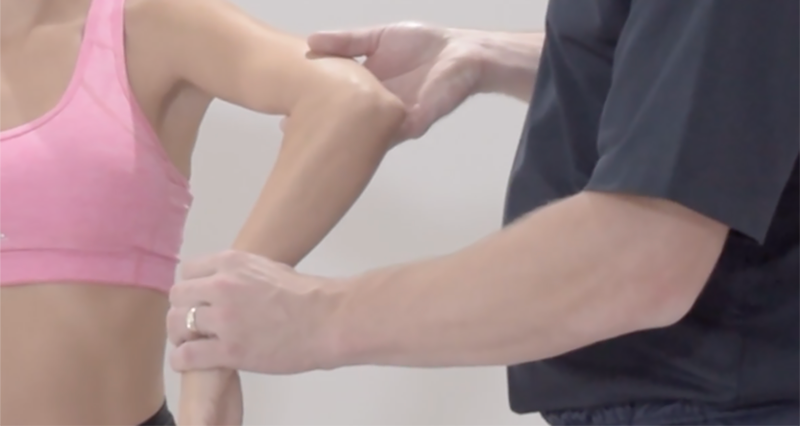The empty can test, or Jobe test assesses for shoulder impingement, specifically involving the supraspinatus tendon. Healthcare professionals such as physical therapists, orthopaedic surgeons, and sports medicine practitioners use this test.
What is shoulder impingement?

Shoulder impingement, also known as swimmer’s shoulder or thrower’s shoulder, happens when the tendons of the rotator cuff muscles become trapped or pinched while moving through a narrow bony channel. This channel, called the subacromial space, lies beneath the arch of the acromion.
How to perform the test
Sit or stand the patient comfortably with their arms at the sides and elbows extended. Instruct the patient to elevate their arms to 90 degrees out sideways, thumbs pointing downward. As a result, this position resembles holding an “empty can”. Hence, where the name “empty can test” originates from. Then provide resistance against the patient’s attempt to maintain the arms in the raised position.

What is a positive empty can test?
Pain or weakness during this manoeuvre indicates a positive sign of supraspinatus tendon impingement.
Empty Can Test Explained
The empty can test places the supraspinatus tendon in a position where the patient may experience compression between the acromion (a bony projection of the scapula) and the humeral head. As a result, if impingement is present, the test reproduces pain or weakness in the shoulder.
Considerations
It is worth noting that the test is not without its controversies. It has been suggested by some studies that compared to other clinical tests, it may not be as specific or sensitive for detecting supraspinatus pathology.
Additionally, false positives and negatives can occur, and alongside other clinical findings and diagnostic procedures, the test should be interpreted for a comprehensive assessment of shoulder pathology. Therefore, valuable information can be provided by the empty can test, but typically, it is used in conjunction with other clinical tests and imaging studies to make an accurate diagnosis of shoulder impingement.




